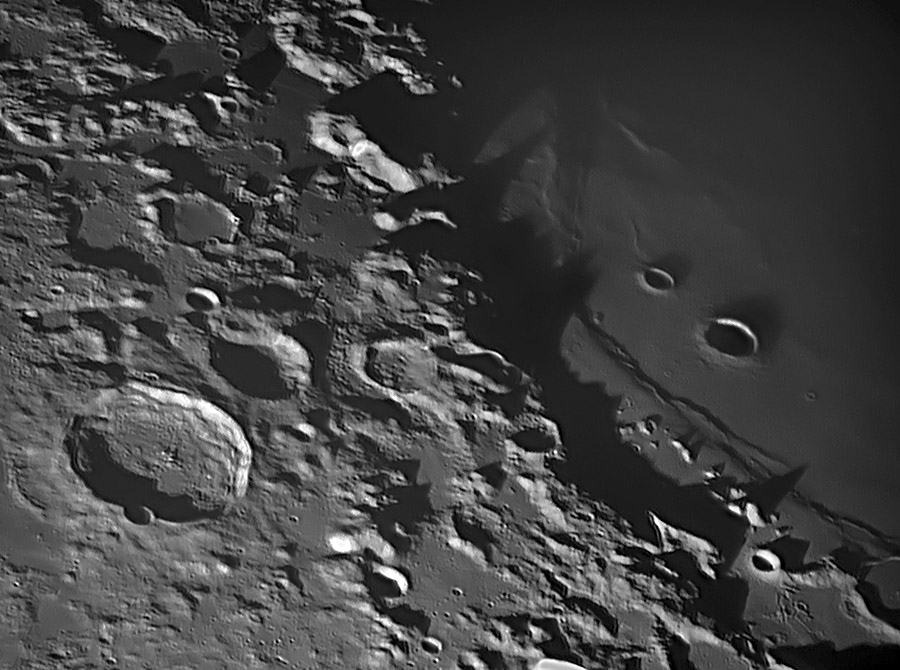September 12, 2023
Dusk Comes To Crisium
Originally published August 28, 2013

image by Alex Sanz, Ayllón, Segovia - Spain
I like Crisium. Being a big island of darkness surrounded by brightness makes it the easiest lunar landform to identify, and it has many interesting topographic features. Alex's low Sun image presents an unusual view of the spiky drama of the basin rim that surrounds the mare itself. And the dark sliver of a shadow tracing the high points of the Oppel mare ridge is visual evidence of the 450 m fault from the ridge to the central mare surface immediately to the east. Near the center of the image is the slightly out of focus looking east flank of Tisserand A. This shallow crater isn't really out of focus but the talus from the massif (a fancy word for a isolated mountain) on its east has tumbled both into and away from the crater, creating an unexpected smoothness in the midst of more strongly textured terrain. Looking at the LRO topographic imageshows that this massif is part of a scattered line that defines the topographic high points of the conspicuous Crisium basin rim that also casts the spiry shadows.
Chuck Wood
Technical Details
24th Aug 2013, 03:30 U.T. Celestron 0.28 m + DMK 31 + red filter f/30 + C-11 Gemini mount. Seeing changing, average, wind gusts ocassionally.
Related Links
21st Century Atlas chart 1 & 2.
Names
Alex' astrophotography website
Yesterday's LPOD: Rille Cut
Tomorrow's LPOD: Broad Region of Pink
COMMENTS?
Register, Log in, and join in the comments.



